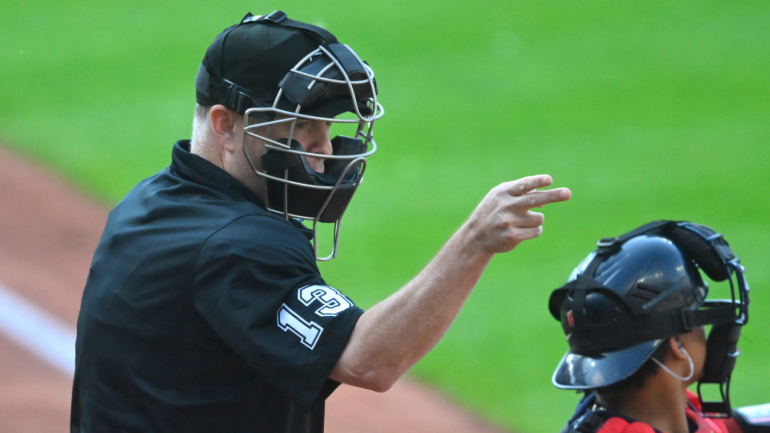
Throughout the season the CBS Sports MLB experts will bring you a weekly Batting Around roundtable breaking down pretty much anything. The latest news, a historical question, thoughts about the future of baseball, all sorts of stuff. Last week we debated the best third baseman in baseball. This week we're going to tackle the automated strike zone (ABS for automated balls and strikes).
Are you in favor of a fully automated strike zone?
Matt Snyder: I like using ABS as a hitter challenge system, which would surely catch the most egregious misses without full automation. I witnessed it work well in the minors earlier this season, where the batter immediately needs to signal (it was via tapping the top of his helmet in the direction of the home-plate umpire right after the call) and then the videoboard in the outfield shows the graphical strike zone, similar to MLB Gameday plotting pitches. It really only delayed the game maybe five seconds each time and that's a small price to pay to correct terrible missed calls.
I don't want to get into having it happen on every single pitch. I don't love the idea of the pitcher barely clipping the front of the strike zone with a huge dropping pitch and gaming the system, plus there's a bit of a built-in delay between an umpire hearing the call and then signaling. Sure, it's only a second or two, but that's every single pitch in a game, not just one or two challenges.
The umpires are actually very accurate in calling balls and strikes, which is a ridiculously difficult job with the naked eye in this day and age. Get them help while also realizing they are good enough to not need to be totally replaced.
R.J. Anderson: People smarter than me say the technology isn't there yet for a fully automated zone. Who am I to disagree? Anyway, the challenge system seems like a perfectly fine compromise for all the involved parties -- it gets more calls correct without making the umpires obsolete; it doesn't require the players to fully adjust to the automated zone; and hey, maybe MLB can sell branding rights on strike-zone challenges, generating more revenue along the way. Everyone wins. Plus we avoid the negative downstream effects that Snyder referenced above.
Mike Axisa: I would like to see full ABS eventually, yes, but not anytime soon. The technology is not there yet -- MLB tells us this each time they adjust the strike zone in the minors, which is every year right now -- and the strike zone is way too important to use an automated system that is still a work in progress. In the minor leagues where ABS is used, the walk rate is sky high. No one wants to see more walks (they're boring) and that suggests there are still bugs to work out with the shape of the strike zone.
A challenge system is a good intermediate step and, having seen it in the minors, the process is really quick. Nothing like regular instant replay, where you're waiting on the dugout to hear from the video guy, then the umpires to get on the phone with the replay crew in New York, etc. Regular instant replay takes minutes. ABS challenges in the minors take 10-15 seconds. I think that's a good first step toward an automated zone. ABS is not precise enough yet to implement it fully.


















